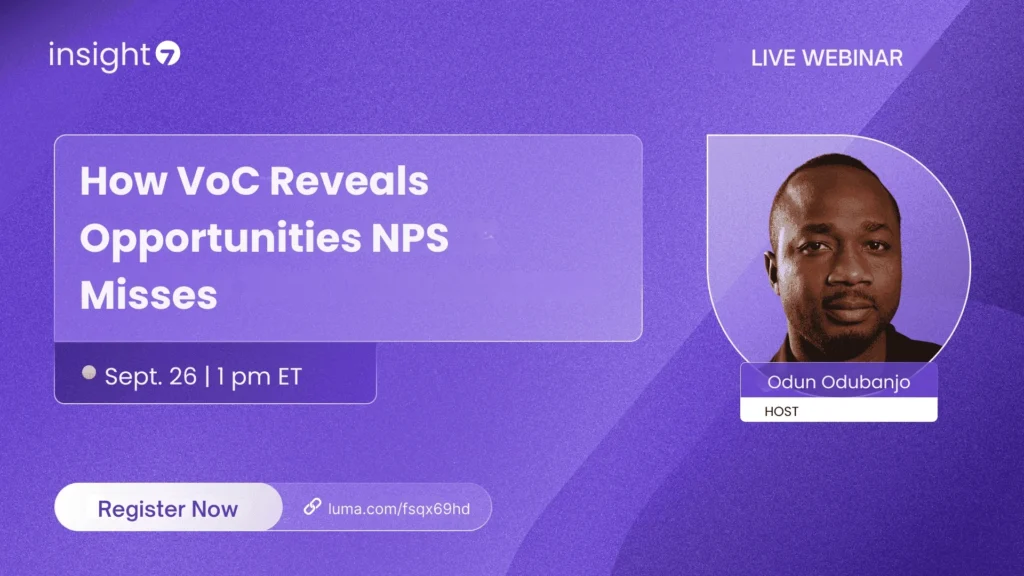A Guide To Using AI Tools for Smarter Performance Review Processes
-
Bella Williams
- 10 min read
This guide explores how AI tools can enhance performance review processes, leading to more objective evaluations, improved employee engagement, and actionable insights for continuous development. It provides practical implementation guidance for integrating AI into performance management systems, ensuring alignment with organizational goals.
Transforming Performance Reviews with AI Tools
Organizations are increasingly moving away from traditional performance review methods to AI-powered solutions that provide data-driven insights and foster continuous feedback. The integration of AI tools into performance reviews not only streamlines the evaluation process but also enhances the overall employee experience.
The business impact of integrating AI tools into performance reviews includes enhanced employee satisfaction, reduced bias, and improved alignment between individual and organizational goals. By leveraging AI, organizations can facilitate real-time feedback and performance tracking, allowing them to monitor employee progress and development effectively.
What distinguishes high-performing organizations utilizing AI tools for performance reviews from those relying solely on traditional methods is their ability to leverage data for informed decision-making. This data-driven approach empowers managers to provide constructive feedback and identify areas for improvement.
Foundation requirements for implementing effective AI tools in performance reviews include a robust data infrastructure and a commitment to cultural change. Organizations must prioritize data quality and ensure that employees understand the benefits of AI-driven evaluations.
AI Tools for Performance Reviews Defined: Beyond Traditional Methods
AI tools for performance reviews are designed to deliver objective, data-driven evaluations that surpass conventional methods. These tools analyze behavioral data and performance metrics to provide actionable insights, significantly reducing reliance on subjective assessments.
Key Capabilities: What AI tools for performance reviews enable for organizational development
- Real-time performance tracking with specific feedback loops for continuous improvement
- Bias reduction through data-driven evaluations and standardized metrics
- Goal alignment facilitation with specific organizational outcomes
- Employee engagement enhancement through personalized feedback and development plans
- Career development acceleration with specific training and mentorship recommendations
Business Impact: How AI tools drive measurable improvements in employee performance, engagement, and retention rates. Organizations that adopt AI tools can expect to see increased productivity, higher employee morale, and a more cohesive work environment.
Strategic Drivers for AI Tool Adoption in Performance Reviews
Market Context: The shift in organizational priorities towards data-driven performance management and the need for continuous feedback is reshaping how companies approach employee evaluations.
Critical Business Needs:
- Performance Management at Scale: Managing performance reviews for large teams can be challenging, and traditional methods often fall short. AI tools streamline this process, making it more efficient.
- Consistency in Evaluations: Standardized performance metrics are crucial for fostering a fair organizational culture. AI tools ensure that evaluations are consistent across the board.
- Employee Engagement and Retention: AI-driven feedback mechanisms enhance employee satisfaction and reduce turnover by providing timely and relevant insights.
- Data-Driven Decision Making: Actionable insights derived from performance data inform talent management strategies, allowing organizations to make informed decisions.
- Agility in Performance Management: Flexible performance review processes that adapt to changing organizational goals are essential for maintaining a competitive edge.
Building Effective Data Infrastructure for AI Performance Reviews
Data Strategy: A well-defined information architecture supports reliable AI-driven performance reviews. Organizations must ensure that they have the necessary data infrastructure in place to facilitate effective evaluations.
Essential Data Components: A multi-source approach to gathering comprehensive performance data for improved evaluation accuracy includes:
- Employee self-assessments and peer feedback for holistic evaluations.
- Performance metrics from project management tools and productivity software.
- Engagement survey results and correlation with performance outcomes.
- Historical performance review data for trend analysis and benchmarking.
- Learning and development records to track skill acquisition and growth.
Data Quality Standards: Requirements for accurate insights from AI-driven performance reviews include:
- Data capture specifications and accuracy thresholds for performance metrics.
- Standardization of evaluation criteria and performance indicators.
- Privacy and compliance protocols for handling employee performance data.
AI Performance Review Tool Architecture
Technology Framework: Understanding how AI tools process and deliver performance insights is crucial for successful implementation.
Core Components:
- Data Integration Layer: Connecting various HR systems, performance management tools, and communication platforms ensures seamless data flow.
- AI Analytics Engine: This component processes data to generate insights from performance metrics and feedback.
- Feedback and Review Interface: User-friendly dashboards for managers and employees to access performance insights enhance usability.
- Continuous Learning Loop: Mechanisms for refining AI models based on user feedback and performance outcomes ensure ongoing improvement.
Integration Requirements: Essential connections for comprehensive performance review effectiveness include:
- HR system synchronization for performance data context and alignment with organizational goals.
- Integration with learning management systems for tracking employee development.
- Communication tool connectivity for seamless feedback collection.
Advanced Methodologies for AI-Driven Performance Reviews
Specialized Applications: AI tools can be tailored to address specific performance review scenarios, enhancing their effectiveness.
Continuous Feedback and Development: AI-driven insights into employee performance trends enable timely interventions. This includes:
- Real-time feedback mechanisms for ongoing performance discussions.
- Personalized development pathways based on individual performance data.
Bias Mitigation Strategies: AI tools can identify and reduce bias in performance evaluations by:
- Analyzing evaluation patterns to highlight potential biases.
- Standardizing performance metrics to ensure equitable assessments.
Goal Setting and Alignment: AI-enhanced capabilities for establishing and tracking performance goals include:
- Data-driven goal-setting frameworks that align with organizational objectives.
- Continuous tracking of progress toward individual and team goals.
Measuring AI Tools' Impact on Performance Reviews
Performance Metrics Framework: KPIs that demonstrate the effectiveness of AI-driven performance review processes are essential for evaluating success.
Individual Performance Metrics:
- Improvements in employee performance ratings over time.
- Engagement score enhancements following AI-driven feedback.
- Career progression metrics for employees receiving AI-enhanced reviews.
Team Performance Indicators:
- Team productivity increases and collaboration effectiveness post-implementation.
- Retention rates and employee satisfaction improvements linked to AI feedback mechanisms.
Organizational Impact Assessment:
- Overall improvements in performance management processes and employee development.
- Cultural alignment and consistency in performance evaluations across departments.
- Organizational agility in adapting to performance management needs.
Implementation Excellence for AI Performance Review Tools
Deployment Strategy: Best practices for rolling out AI tools in performance management are critical for success.
Phase 1: Foundation Building
- Setting up data infrastructure and ensuring data capture accuracy.
- Training HR teams on interpreting AI-generated insights for performance management.
- Educating managers on utilizing AI tools for effective feedback delivery.
Phase 2: Pilot Program Execution
- Selecting high-potential teams for initial deployment and effectiveness validation.
- Defining success metrics and establishing performance baselines.
- Collecting feedback from pilot participants to optimize the program.
Phase 3: Organization-Wide Scaling
- Expanding successful pilot programs across all teams and departments.
- Implementing advanced methodologies tailored to specific performance review needs.
- Establishing continuous improvement processes based on organizational outcomes.
Overcoming Adoption Challenges for AI Performance Review Tools
Common Implementation Obstacles: Typical barriers to successful deployment of AI tools must be addressed.
Technology Challenges:
- Concerns about data privacy and employee trust in AI evaluations.
- Integration issues with existing HR systems and performance management tools.
- Resistance to adopting new technologies among management.
Organizational Barriers:
- Skepticism regarding the accuracy and reliability of AI-generated insights.
- Concerns about the transparency of AI-driven performance evaluations.
- Cultural resistance to changing established performance review processes.
Solution Strategies: Proven approaches for overcoming implementation hurdles include:
- Comprehensive change management planning focused on the benefits of AI tools.
- Gradual rollout with success stories to demonstrate the value of AI insights.
- Training programs designed to enhance user confidence in AI-driven evaluations.
Future Evolution of AI Performance Review Tools
Emerging Capabilities: Next-generation features and innovations in AI performance management are on the horizon.
- Real-time feedback during performance discussions with actionable insights.
- Predictive analytics for identifying high-potential employees and development needs.
- Customized performance improvement plans based on individual strengths and weaknesses.
Strategic Transformation: How AI tools will reshape performance management practices includes:
- Cultivating a culture of continuous feedback and development.
- Transforming HR roles toward strategic performance management and coaching.
- Enhancing organizational effectiveness through data-driven decision-making.
Universal principle: success comes not from "implementing AI performance review tools," but from transforming organizational performance management through systematic data-driven insights and evidence-based development.
FAQs About AI Tools for Performance Reviews
What are AI tools for performance reviews? → Technologies that analyze employee performance data and feedback to provide objective, actionable insights for performance management.
How do they differ from traditional performance reviews? → Continuous feedback based on real-time data vs. annual evaluations based on retrospective assessments.
Can they integrate with our existing HR systems? → Yes, AI tools can be designed to sync with existing performance management frameworks and HR software.
How much data is needed for effective AI performance reviews? → Typically, 6-12 months of historical performance data for accurate insights and trend analysis.
Will employees accept AI-generated performance insights? → Acceptance depends on effective communication of benefits, transparency in data usage, and involvement in the implementation process.
What's the expected ROI and timeline? → Initial insights within weeks, improved employee engagement within 3-6 months, and full organizational impact typically within 12 months.
Final Takeaway
AI tools for performance reviews represent the future of performance management and employee development. Organizations can leverage data-driven insights to cultivate high-performing teams and achieve strategic objectives. Encourage next steps: evaluate AI performance management platforms, design pilot programs, and commit to transforming performance review processes for maximum impact.







